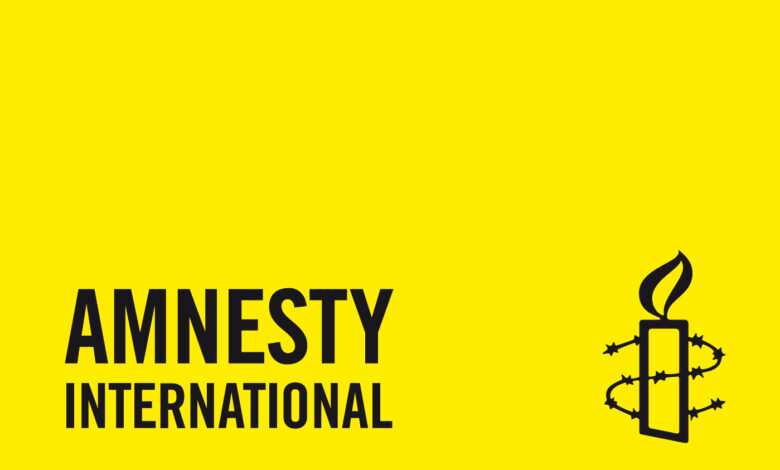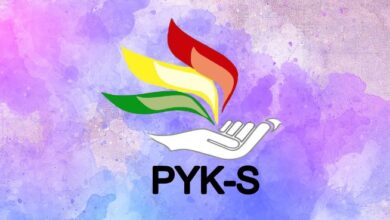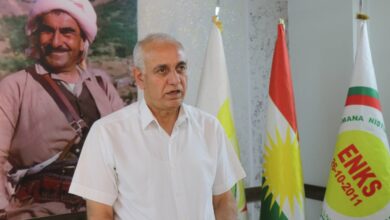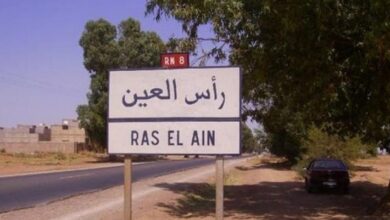
Amnesty International Report 2014/15
Syria’s internal armed conflict continued relentlessly through the year and saw both government forces and non-state armed groups commit extensive war crimes and gross human rights abuses with impunity. Government forces deliberately targeted civilians, indiscriminately bombarding civilian residential areas and medical facilities with artillery, mortars, barrel bombs and chemical agents, unlawfully killing civilians. Government forces also enforced lengthy sieges, trapping civilians and depriving them of food, medical care and other necessities. Security forces arbitrarily arrested or continued to detain thousands, including peaceful activists, human rights defenders, media and humanitarian workers, and children, subjecting some to enforced disappearance and others to prolonged detention or unfair trials. Security forces systematically tortured and otherwise ill-treated detainees with impunity; thousands of detainees reportedly died due to torture or harsh conditions. Non-state armed groups, which controlled some areas and contested others, indiscriminately shelled and besieged areas containing civilians perceived to support the government. Some, particularly the Islamic State (IS, formerly known as ISIS) armed group, carried out indiscriminate suicide attacks and other bombings in civilian areas, and perpetrated numerous unlawful killings, including summary killings of captives and suspected opponents.
Background
Fighting between government and disparate non-state armed groups continued to rage across Syria throughout the year, killing and injuring thousands and causing further mass population displacement and refugee outflows, particularly to Turkey, Lebanon, Jordan, Egypt and the Kurdistan Region of Iraq. By the end of the year, the conflict had caused a total of around 200,000 deaths, according to the UN. In addition, 7.6 million people were internally displaced and approximately 4 million had become refugees in other countries.
International efforts to resolve the armed conflict saw the UN, with support from the USA and Russia, convene the Geneva II conference in January. It was attended by representatives of the Syrian government and the opposition Syrian National Coalition, but not by armed groups outside the Syrian National Coalition’s military command. The talks concluded in February without any agreement.
The UN Security Council remained divided on the issue, undermining efforts to pursue a peace agreement, but adopted a series of resolutions on the crisis. Resolution 2139 in February addressed the conduct of hostilities and arbitrary detentions, and demanded that all parties to the conflict allow humanitarian access across conflict lines and to besieged areas; however, they failed to do so. Resolution 2165 in July focused on the delivery of international humanitarian aid to besieged areas and across national borders. In August, resolution 2170 condemned unlawful killings, other gross abuses and recruitment of foreign fighters by the armed groups IS and Jabhat al-Nusra, and added six individuals affiliated with them to the UN al-Qa’ida Sanctions List. The UN Security Council failed to adopt other measures to address impunity in Syria. Russia and China vetoed a draft resolution to refer the situation in Syria to the Prosecutor of the International Criminal Court.
The independent international Commission of Inquiry on the Syrian Arab Republic, established by the UN Human Rights Council in 2011, continued to monitor and report on violations of international law committed by the parties to the conflict. However, it remained barred by the government from entering Syria.
In June, the Organization for the Prohibition of Chemical Weapons (OPCW) reported that the government had completed the handover of its chemical weapons stockpile for international destruction, in accordance with a September 2013 agreement with the US and Russian governments.
In September, a US-led international coalition began air strikes against IS and other armed groups in northern Syria. According to the UN Security Council, the air strikes killed some 50 civilians.
In June, President al-Assad won presidential elections held only in government-controlled areas, and returned to office for a third seven-year term. The following week, he announced an amnesty, which resulted in few prisoner releases; the vast majority of prisoners of conscience and other political prisoners held by the government continued to be detained.
Internal armed conflict – violations by government forces
Use of indiscriminate and prohibited weapons
Government forces mounted attacks on areas controlled or contested by armed opposition forces and committed unlawful killings of civilians; some attacks amounted to war crimes or crimes against humanity. Government forces repeatedly carried out both direct and indiscriminate attacks, including air strikes and artillery shelling of civilian residential areas, often using barrel bombs – high explosive unguided weapons dropped from helicopters – causing numerous civilian deaths and injuries, including of children. Despite the demand of UN Security Council resolution 2139 that all parties to the conflict end indiscriminate attacks, in the 10 months following the resolution’s adoption, government forces killed almost 8,000 civilians in shelling and other indiscriminate attacks, according to the Violations Documentation Centre, a local monitoring NGO. In one incident on 29 October, government helicopters dropped four barrel bombs on a camp for displaced people in Idleb, killing at least 10 civilians and wounding dozens, according to the Syrian Observatory for Human Rights.
Government forces carried out several attacks using barrel bombs or other munitions containing chlorine, despite such munitions being prohibited under international law. Attacks using such munitions included those in April on the towns of Kafar Zeita, al-Tamana’a and Tal Minnis, according to the UN’s Commission of Inquiry. A fact-finding investigation by the OPCW confirmed in September that government forces had used chlorine “systematically and repeatedly” in these attacks. Government forces also used cluster munitions, indiscriminate weapons that deploy incendiary bomblets over a wide area exposing victims to serious, often fatal, burns.
Sieges and denial of humanitarian access
Government forces maintained long-running sieges of civilian areas in and around Damascus, including Yarmouk, Daraya and Eastern Ghouta, and elsewhere, including the Old City of Homs siege which ended in May. Armed opposition fighters were usually present in besieged areas and sometimes also posed a threat to civilians. Civilians trapped within the besieged areas faced starvation, lack of medical care and basic services, and were repeatedly exposed to artillery shelling, bombing from the air and sniper fire from government soldiers. In March, government soldiers fired on civilians who had sought to leave Eastern Ghouta under a white flag, killing women, men and children. Yarmouk, a Damascus suburb containing around 18,000 of the over 180,000 Palestinian refugees and Syrians who had lived there prior to the conflict, entered a third year of continuous siege in December. Despite a truce agreed in June, government forces continued to cut off food and water supplies and block some international humanitarian aid. When they allowed civilian evacuations from besieged areas, government forces detained men and boys among those evacuated, subjecting many to long-term detention for “screening”.
Attacks on medical facilities and workers
Government forces continued to target health facilities and medical workers in areas controlled by armed groups. They bombed hospitals, barred the provision of medical supplies in humanitarian aid shipments to besieged areas, and arrested and detained medical workers and volunteers, apparently to disrupt and deny basic health care services in those areas. Physicians for Human Rights accused government forces of systematically attacking the health care system in areas controlled by opposition groups and of having killed 569 health professionals between April 2011 and October 2014.
Internal armed conflict – abuses by armed groups
Non-state armed groups also committed war crimes and gross abuses of human rights. These included IS and Jabhat al-Nusra, both of which used foreign fighters, and groups that formed part of or were affiliated to the Free Syrian Army.
Use of indiscriminate weapons
Armed groups used indiscriminate weapons, including mortars, tank and artillery shells, during attacks on government-held civilian areas, causing many civilian casualties. In April and May, armed groups that attacked the Saif al-Dawla, al-Midan and al-Sulimaniya neighbourhoods in western Aleppo reportedly fired mortar shells and improvised gas-canister explosives into civilian areas. Jabhat al-Nusra carried out suicide car and lorry bombings in government-controlled areas, including Homs, killing and injuring civilians.
Unlawful killings
IS forces, in particular, committed unlawful killings of captured government soldiers, abducted civilians, including peaceful activists and media workers, foreigners and, reportedly, members of rival armed groups. In the al-Raqqa and eastern Aleppo areas, which IS controlled and subjected to its strict interpretation of Islamic law, IS members carried out frequent public executions; victims were first denounced, then shot or beheaded in front of crowds that often contained children. Most victims were men, but they also reportedly included boys as young as 15 and women.
IS forces publicized some of their crimes for propaganda purposes or to make demands, posting videos on the internet showing them beheading captives, including Syrian, Lebanese and Kurdish soldiers, and American and British journalists and aid workers who had been abducted by armed groups and transferred or “sold” to IS. In some cases, the beheading videos included threats to kill other captives.
Sieges, denial of humanitarian access and attacks on medical facilities and workers
IS, Jabhat al-Nusra and other armed groups jointly or separately laid siege to several government-held areas, including Zahraa and Nobel, northwest of Aleppo, as well as the area around Aleppo Central Prison until government forces broke that year-long siege in May. They shelled some areas indiscriminately, cut off food, water and other supplies to the civilian inhabitants, interfered with or prevented the distribution of humanitarian aid, and attacked and detained medical workers.
Abductions
Armed groups were responsible for numerous abductions and detentions of local activists, suspected government supporters, foreign journalists and aid workers, and others, subjecting many to torture or other ill-treatment and some to unlawful summary executions. Those held included children; in May, for example, IS forces abducted over 150 Kurdish boys from Manbej, between Aleppo and Kobani, subjecting some to torture. All had been released by October.
Kurdish areas
In northern Syria, the Democratic Union Party (PYD) largely controlled three predominantly Kurdish enclaves – ‘Afrin, Kobani (also known as Ayn al-Arab) and Jazeera – following the withdrawal of government troops in 2012, until IS forces again attacked Kobani mid-year, causing massive forced displacement. In January, the PYD issued a new constitution for the three areas, where it had established a functioning justice system based on so-called Peoples’ Courts. After visiting the area in February, Human Rights Watch urged the PYD authorities to stop arbitrary detentions, cease the use of children as soldiers and to man checkpoints, improve safeguards against detainee abuse, and investigate a spate of abductions and apparent political killings. In July, the PYD demobilized 149 children from their armed ranks and committed to preventing children from taking part in hostilities.
Refugees and internally displaced people
Fighting across Syria continued to cause massive forced displacement of civilians. Approximately 4 million refugees fled from Syria between 2011 and the end of 2014, while the UN Office for the Coordination of Humanitarian Affairs reported that another 7.6 million people, half of them children, were internally displaced within Syria, an increase of more than 1 million since December 2013. In September, a renewed attack by IS forces on Kobani caused a massive refugee outflow, with tens of thousands of inhabitants crossing into Turkey in the space of a few days. In both Lebanon and Jordan, authorities limited the number of refugees entering from Syria, exposing those waiting in border areas to further attacks and deprivation, and continued to block the entry of Palestinian refugees from Syria, rendering them especially vulnerable.
Enforced disappearances
Government security forces continued to hold thousands of uncharged detainees in prolonged pre-trial detention, many in conditions that amounted to enforced disappearance.
Many prisoners arrested in previous years remained forcibly disappeared, amid concerns for their safety. The authorities rarely disclosed information about detainees and frequently denied them access to lawyers and their families.
Those who remained disappeared included entire families, among them married couple Abdulrahman Yasin and Rania Alabbasi, their six children aged between three and 15, and another woman who was present when security forces detained them at their home in March 2013. The authorities disclosed no information about them but a former detainee reported seeing Rania Alabbasi and her children in a Military Intelligence facility known as Branch 291.
Human rights lawyer Khalil Ma’touq and his friend Mohamed Thatha remained victims of enforced disappearance at the end of the year, after security forces detained them at a checkpoint near Damascus on 2 October 2013. The authorities did not confirm their arrest or disclose why or where they were being held, raising concerns for their safety.
Juwan Abd Rahman Khaled, a Kurdish rights activist, was also a victim of continued enforced disappearance. He was detained by State Security officials who raided the Wadi al-Mashari’a district of Damascus in the early hours of 3 September 2012. A former political detainee and victim of torture, his whereabouts and fate remained undisclosed at the end of 2014.
Deaths in custody
Torture and other ill-treatment of detainees being held by Political Security, Military Intelligence, Air Force Intelligence and other government security and intelligence branches remained systematic and widespread. Torture reportedly continued to result in a high incidence of detainee deaths.
In January, a group of forensic experts and former international war crimes prosecutors examined photographs taken at military hospitals of thousands of corpses of prisoners and reported that the Syrian authorities had engaged in systematic torture and unlawful killings of detainees. The government denied the experts’ claim but failed to conduct an independent investigation amid continuing reports of torture and detainees’ deaths during the year.
Many detainees were also reported to have died due to harsh conditions at various detention facilities. These included Military Intelligence Branch 235, also known as the “Palestine Branch”. One released detainee reported that many detainees at Branch 235 had scabies or other skin ailments and digestive illnesses due to severe overcrowding, inadequate sanitation, and a lack of food, clean drinking water and medical care. Often, detainees’ families were not officially informed of their deaths; in other cases, families were told that detainees had died of heart attacks, but were denied access to their bodies, which were not returned to them for burial.
In October, a UK inquest jury ruled that British medical doctor Abbas Khan was unlawfully killed in Syrian detention in December 2013, contradicting a Syrian government finding that he had committed suicide. Security forces had arrested Dr Khan in November 2012 within 48 hours of his arrival as a medical volunteer in Syria; he was reported to have been tortured and otherwise ill-treated during months in detention.
Unfair trials
After often lengthy periods of pre-trial detention, scores of perceived government critics and peaceful opponents were prosecuted before the Anti-Terrorism Court, established in 2012, and Military Field Courts, where they did not receive fair trials. Some defendants tried by the Anti-Terrorism Court faced charges based on their legitimate exercise of freedom of expression or other rights. Defendants before Military Field Courts, many of whom were civilians, had no right to legal representation and faced judges who were serving military officers. They also had no opportunity to appeal their sentences.
Faten Rajab Fawaz, a physicist and peaceful pro-reform activist arrested by Air Force Intelligence officials in December 2011 in Damascus, was reported in September to be facing trial before a Military Field Court on undisclosed charges. Following her arrest, she was held at several detention facilities, sometimes in solitary confinement for months at a time, and reportedly tortured and otherwise ill-treated.
Mazen Darwish, Hani al-Zitani and Hussein Gharir, activists from the independent Syrian Center for Media and Freedom of Expression (SCM), faced charges of “publicizing terrorist acts” and possible 15-year prison terms. They were arrested when Air Force Intelligence officials raided the SCM’s Damascus office in February 2012. Their trial before the Anti-Terrorism Court was adjourned continuously since February 2013; the outcome of their case remained unknown at the end of 2014.
Gebrail Moushe Kourie, president of the unauthorized political party Assyrian Democratic Organization, was arrested in December 2013 in Qamishly in northern Syria. After months of detention in facilities where torture was rife, he was charged with belonging to “an unlicensed secret political party” and “incitement of violence to topple the government” before a criminal court judge who referred him for trial by the Anti-Terrorism Court.




